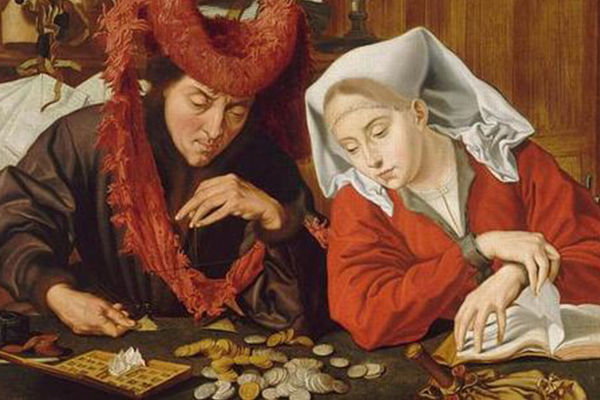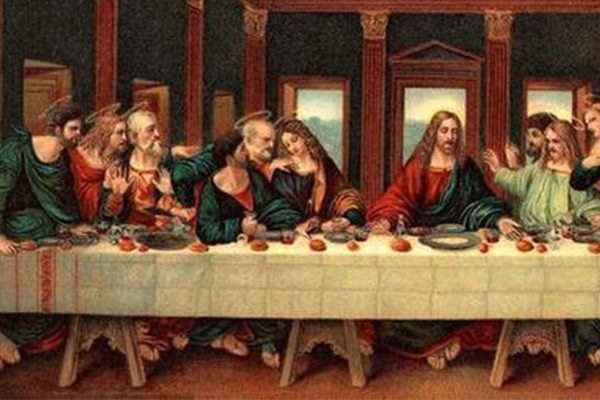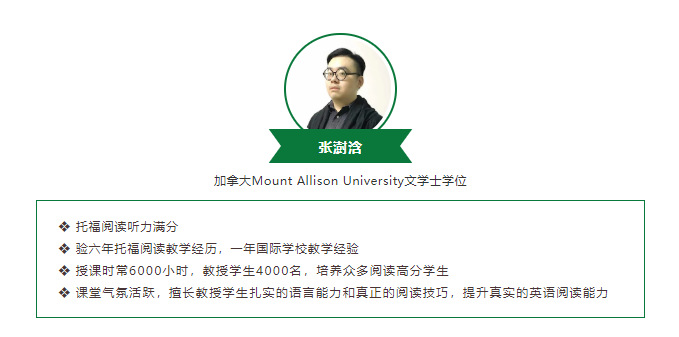
考托福的同学们一定对文艺复兴这块内容不陌生,因为在托福阅读历史板块的话题中经常能够看到它的身影。这部分因为涉及到的背景知识以及生僻词汇常常让初考同学感到非常难。下面就给大家介绍一下托福阅读高频考点文艺复兴。

背景介绍
The Renaissance was a fervent period of European cultural, artistic, political and economic “rebirth” following the Middle Ages. Generally described as taking place from the 14th century to the 17th century, the Renaissance promoted the rediscovery of classical philosophy, literature and art. Some of the greatest thinkers, authors, statesmen, scientists and artists in human history thrived during this era, while global exploration opened up new lands and cultures to European commerce. The Renaissance is credited with bridging the gap between the Middle Ages and modern-day civilization.
翻译:
文艺复兴是中世纪之后欧洲文化、艺术、政治和经济“复兴”的狂热时期。文艺复兴一般被认为发生在14世纪到17世纪,它推动了古典哲学、文学和艺术的重新发现。人类历史上一些最伟大的思想家、作家、政治家、科学家和艺术家都在这一时期蓬勃发展,全球的探索为欧洲商业开辟了新的土地和文化。人们认为文艺复兴弥合了中世纪和现代文明之间的鸿沟。
词汇
Renaissance n. 文艺复兴
Fervent adj. 热心的;强烈的;炽热的;热烈的
Rebirth n. 再生;复兴
Statesmen n. 政治家
Commerce n. 贸易;商业;商务
Be credited with 被誉为
时间
During the Middle Ages, a period that took place between the fall of ancient Rome in 476 A.D. and the beginning of the 14th century, Europeans made few advances in science and art. Also known as the “Dark Ages,” the era is often branded as a time of war, ignorance, famine and pandemics such as the Black Death. Some historians, however, believe that such grim depictions of the Middle Ages were greatly exaggerated, though many agree that there was relatively little regard for ancient Greek and Roman philosophies and learning at the time.
翻译:
在中世纪(从公元476年古罗马灭亡到14世纪初),欧洲人在科学和艺术上几乎没有进步。这个时期也被称为“黑暗时代”,经常被贴上战争、无知、饥荒和流行病(比如黑死病)的标签。然而,一些历史学家认为,这种对中世纪的可怕描述被极大地夸大了,尽管许多人认为当时对古希腊和罗马哲学和学问的关注相对较少。
词汇
Be branded as 被扣上……罪名,被认为是....
Ignorance n. 无知,愚昧;不知,不懂
Famine n. 饥荒
pandemic adj. (疾病)在全国(或世界)流行的 n. (全国或全球性)流行病,瘟疫
Grim adj. 冷酷的;糟糕的;残忍的
Exaggerate v. 夸张,夸大
人文主义
During the 14th century, a cultural movement called humanism began to gain momentum in Italy. Among its many principles, humanism promoted the idea that man was the center of his own universe, and people should embrace human achievements in education, classical arts, literature and science. In 1450, the invention of the Gutenberg printing press allowed for improved communication throughout Europe and for ideas to spread more quickly. As a result of this advance in communication, little-known texts from early humanist authors such as those by Francesco Petrarch and Giovanni Boccaccio, which promoted the renewal of traditional Greek and Roman culture and values, were printed and distributed to the masses. Additionally, many scholars believe advances in international finance and trade impacted culture in Europe and set the stage for the Renaissance.
翻译:
14世纪,一场叫做人文主义的文化运动开始在意大利兴起。在它的众多原则中,人文主义提倡的理念是人是他自己的宇宙的中心,人们应该信奉人类在教育、古典艺术、文学和科学方面的成就。1450年,古腾堡印刷机的发明改善了整个欧洲的交流,使思想传播得更快。由于这种传播上的进步,早期人文主义作家如佩特拉克和薄伽丘的鲜为人知的文本被印刷并分发给大众,这些文本促进了希腊和罗马传统文化和价值观的更新。此外,许多学者认为,国际金融和贸易的进步影响了欧洲的文化,并为文艺复兴奠定了基础。
词汇
Humanism n. 人文主义
Momentum n. 势头;[物] 动量;动力;冲力
Principle n. 原理,原则;主义
Embrace vt. 拥抱;欣然采纳;信奉;包含
Renewal n. 更新,恢复;复兴n. 更新,恢复;复兴
Mass n. 群众,民众;大量,众多;质量
set the stage for 为…作好准备;为…打好基础

Renaissance Art, Architecture and Science
Art, architecture and science were closely linked during the Renaissance. In fact, it was a unique time when these fields of study fused together seamlessly. For instance, artists like Da Vinci incorporated scientific principles, such as anatomy into their work, so they could recreate the human body with extraordinary precision. Architects such as Filippo Brunelleschi studied mathematics to accurately engineer and design immense buildings with expansive domes.
Scientific discoveries led to major shifts in thinking: Galileo and Descartes presented a new view of astrology and mathematics, while Copernicus proposed that the Sun, not the Earth, was the center of the solar system. Renaissance art was characterized by realism and naturalism. Artists strived to depict people and objects in a true-to-life way. They used techniques, such as perspective, shadows and light to add depth to their work. Emotion was another quality that artists tried to infuse into their pieces.
Some of the most famous artistic works that were produced during the Renaissance include:
The Mona Lisa (Da Vinci)
The Last Supper (Da Vinci)
Statue of David (Michelangelo)
The Birth of Venus (Botticelli)
The Creation of Adam (Michelangelo)
翻译
文艺复兴时期,艺术、建筑和科学紧密相连。事实上,这是一个独特的时代,这些研究领域无缝地融合在一起。例如,像达·芬奇这样的艺术家将解剖学等科学原理融入到他们的作品中,这样他们就能以非凡的精度重现人体。像菲利普·布鲁内莱斯基这样的建筑师通过学习数学来建造和设计带有宽阔圆顶的巨大建筑。科学发现导致了思想上的重大转变:伽利略和笛卡尔提出了一种新的占星学和数学观点,而哥白尼提出太阳,而不是地球,才是太阳系的中心。文艺复兴时期的艺术以现实主义和自然主义为特点。艺术家们努力以逼真的方式描绘人和物。他们使用透视、阴影和光线等技术来增加作品的深度。
情感是艺术家们试图注入作品的另一种特质。文艺复兴时期一些最著名的艺术作品包括:
蒙娜丽莎 (达·芬奇)
最后的晚餐 (达·芬奇)
大卫雕像 (米开朗基罗)
维纳斯的诞生 (波提切利)
亚当的创造 (米开朗基罗)
词汇
Seamlessly adv. 无缝地
Incorporated vt. 包含,吸收;体现;把……合并
Anatomy n. 解剖;解剖学;剖析;骨骼
Extraordinary adj. 非凡的;特别的;离奇的;特派的
Precision n. 精度,[数] 精密度;
Expansive adj. 广阔的;扩张的;豪爽的
Galileo n. 伽利略(意大利物理学家和天文学家)
Descartes n. 笛卡尔(法国哲学家,数学家)
Astrology n. 占星术;占星学;星座
Copernicus n. 哥白尼(波兰天文学家)
strive to do 努力做
Perspective n. 观点;远景;透视图
Infuse vt. 灌输;使充满;浸渍
以上就是给同学们准备的一些托福阅读有关文艺复兴方面的内容了,建议同学们在复习时多加练习与整理、考前针对自己的薄弱主题多多关注。还想知道更多托福高频考点吗?别慌,唯寻现在推出了托福课程班,精英为你的托福高分。点击【预约试听】即可报名参加。

点击
托福阅读打分规则更新了 掌握有效托福阅读方法才能复习2021托福考试
托福如何才能快速复习?托福阅读满分大神Archer导师教你如何正确刷题
查看更多。

学习有方法,成长看得见
筑梦牛剑/G5/常春藤
